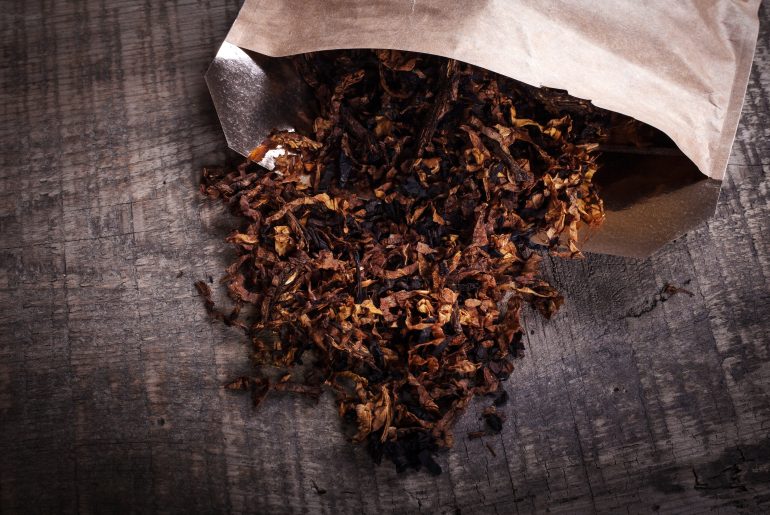Suppose you’re a pipe enthusiast or just stepping into the pipe-smoking world. In that case, you’ve probably encountered a dizzying array of tobacco pipes and pipe tobacco cuts. Understanding these cuts is crucial because they considerably affect the smoking experience. Each cut offers a unique flavor and burning characteristic from ribbon to flake, cake to rope. In this comprehensive guide, we’ll explore the various tobacco cut types commonly used for pipe smoking, shedding light on their origins, characteristics, and blends best suited for.
The Basics of Pipe Tobacco
Before we start our journey into the diversity of tobacco cuts, let’s start with the basics. Unlike cigarette tobacco, pipe tobacco is specially cultivated, processed, and finally cut to deliver the ultimate smoking pleasure. You may wonder what ‘the ultimate’ smoking experience is. Pipe tobaccos offer a richer, more nuanced, and layered smoking experience. Additionally, it is available in a wide range of blends to cater to a diverse clientele. Various flavorings and cuts can further enhance these tobaccos, allowing pipe smokers to explore many options.
Ribbon Cut Tobacco
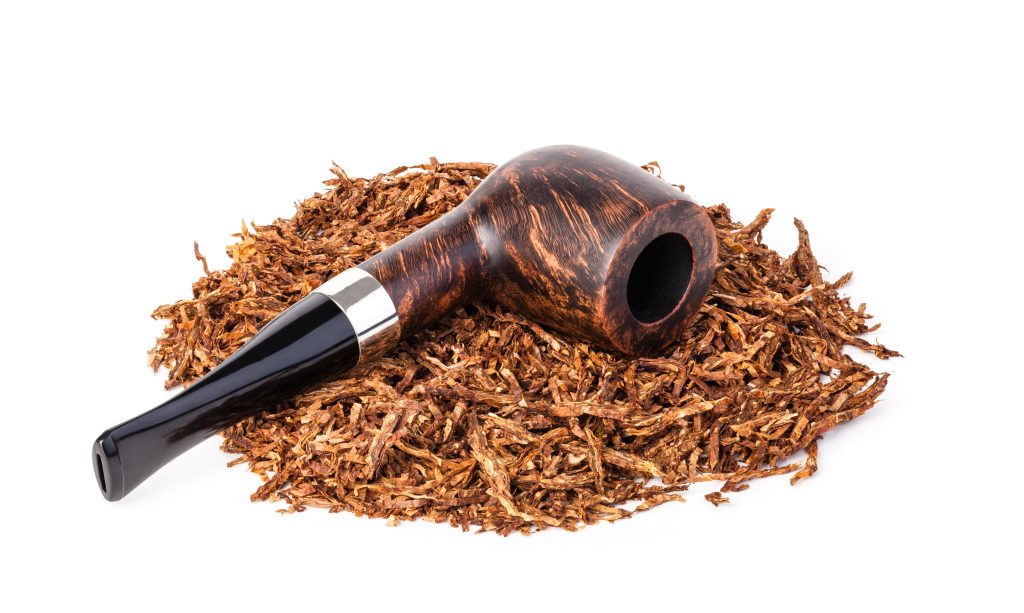
The ribbon cut is arguably the most common and versatile pipe tobacco cut. It consists of long, thin strands of tobacco cut into small ribbons. This cut is known for its easy packing, good burning characteristics, and a balanced blend of flavor and aroma. Ribbon-cut tobacco is suitable for beginners and experienced pipe smokers, making it an excellent choice for an all-day smoke.
A Dance of Flavors with Virginia Tobacco
Ribbon cut is often used with Virginia tobacco, known for its natural sweetness and bright flavors. The amount complements Virginia tobacco’s qualities, allowing for a smooth and even burn. As you ignite your pipe, the Virginia tobacco gently dances on your taste buds, offering a symphony of flavors that range from citrusy notes to grassy undertones.
Flake Tobacco
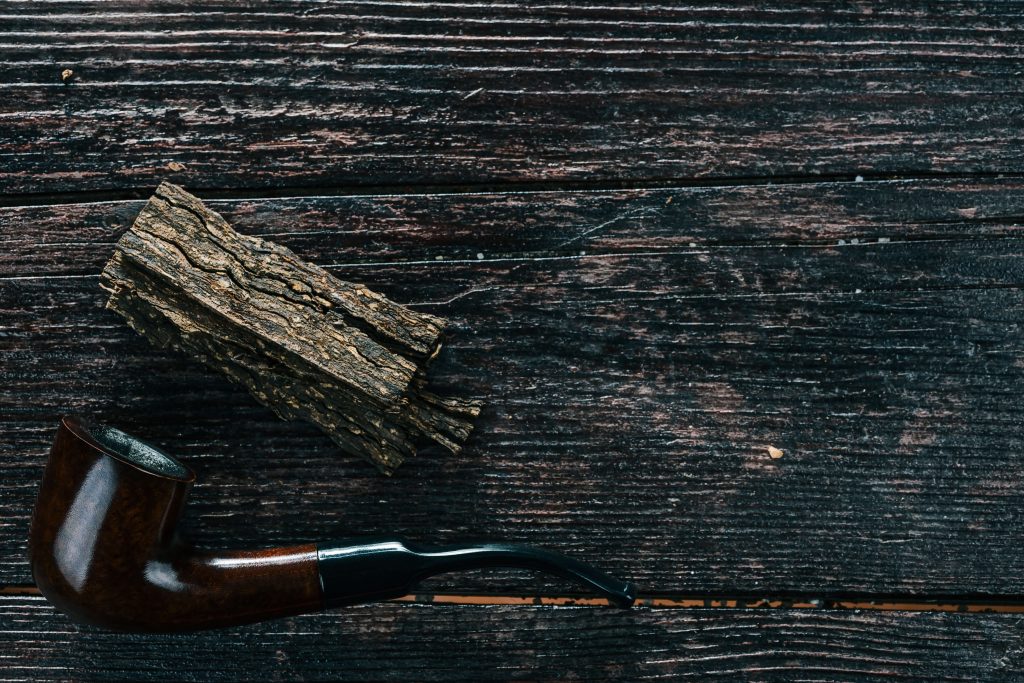
Flake tobacco is created by pressing tobacco leaves into flat, dense cakes and then slicing them into thin flakes. These flakes are usually a bit thicker and less moist than other cuts. Flake tobaccos are loved for their slow-burning nature and concentrated flavors. The preparation involves an extended aging period, resulting in a mellow and refined smoking experience.
The Marriage of Virginia and Burley Tobaccos
Flake tobacco often features a harmonious blend of Virginia and Burley tobaccos. Their partnership provides a balanced flavor profile with Virginia’s sweetness and Burley’s nuttiness. As the flake smolders in your pipe, you’ll savor the intricate interplay of these tobacco leaves, a testament to the artistry of tobacco blending.
Cake Tobacco
Cake tobacco emerges as a compressed and tightly packed form of tobacco. It is typically sliced or broken apart before being smoked. The compact nature of cake tobacco allows for slow and controlled burning, making it a favorite among seasoned pipe smokers who enjoy longer, contemplative smoking sessions.
The Bold Richness of Dark Tobacco
Cake tobacco is often associated with dark tobacco blends, known for their rich and robust flavors. The compression process intensifies the flavors, offering a deep, smoky experience. As the cake crumbles in your pipe, it releases the essence of fire-cured and dark-fired Kentucky tobacco, enveloping your senses in a smoky embrace.
Rope Tobacco
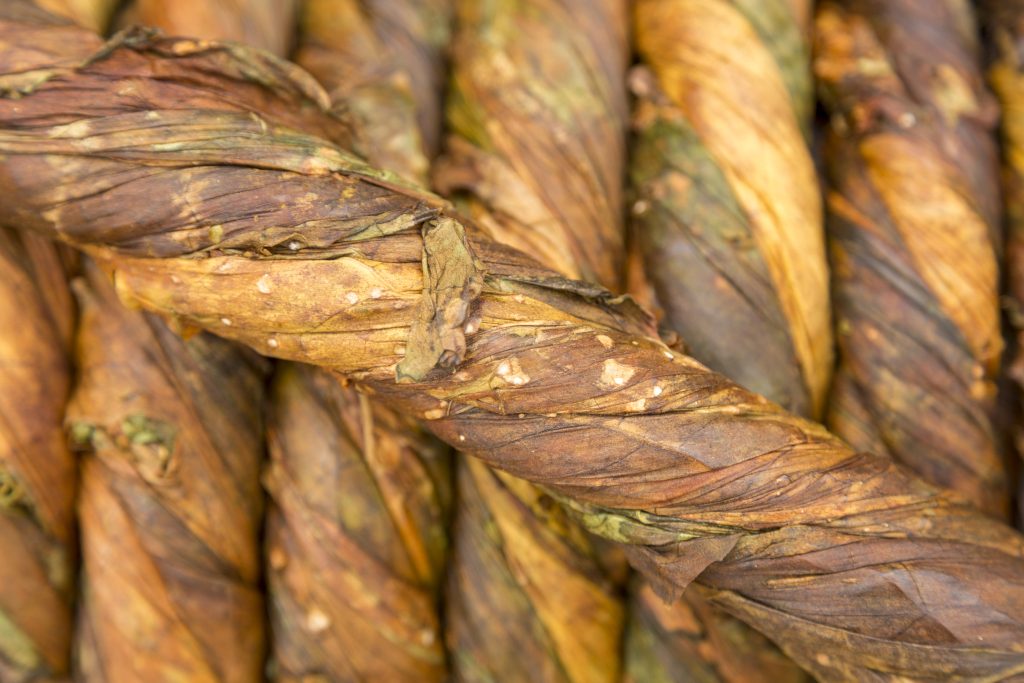
Rope tobacco, as the name suggests, is tobacco leaves twisted into a tight rope-like formation. This cut is not for the faint of heart, as it requires some effort to prepare and smoke. The tightly rolled rope burns slowly, delivering a bold and concentrated flavor.
The Robust Allure of Dark-Fired Kentucky
Rope tobacco is frequently made from dark-fired Kentucky tobacco, celebrated for its robust and smoky flavor. It’s an acquired taste but cherished by those who crave intensity. As you unwind and prepare your rope tobacco for smoking, you embark on a journey into the heart of robust, fire-cured flavors that linger on your palate.
Plug Tobacco
Plug tobacco is akin to cake but comes in a denser, more solid form. Smokers must cut or break off plug pieces before packing their pipes. The lush nature of plug tobacco ensures a slow and cool burn, allowing smokers to savor the flavors.
Burley Tobaccos: The Backbone of Plug Blends
Burley tobaccos are often used in plug tobacco blends, contributing to the blend’s smoothness and nutty notes. As you prepare your plug for smoking, you unleash the essence of Burley tobacco, offering a gentle yet full-bodied experience that fills your senses.
Shag Tobacco
Shag tobacco is finely cut, resulting in a texture similar to loose-leaf tea. It’s known for its excellent burning properties and quick ignition. Due to its fine cut, it requires a gentle hand when packing the pipe to avoid over-packing and restricting airflow.
Aromatic Blends: Shag Tobacco’s Flavorful Canvas
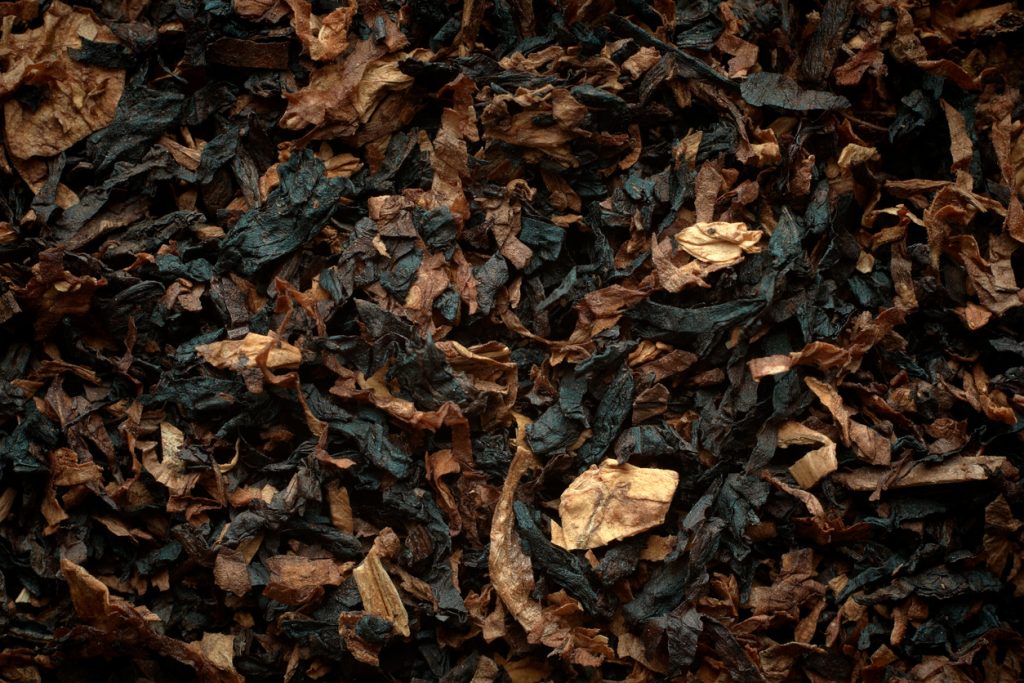
Shag tobacco is commonly used in aromatic blends, where the fine cut allows for a more pronounced release of flavors and aromas. Each strand of shag tobacco acts as a canvas for the masterful strokes of tobacco blenders, holding within it the potential to create a symphony of flavors and fragrances.
Thin Ribbon Cut
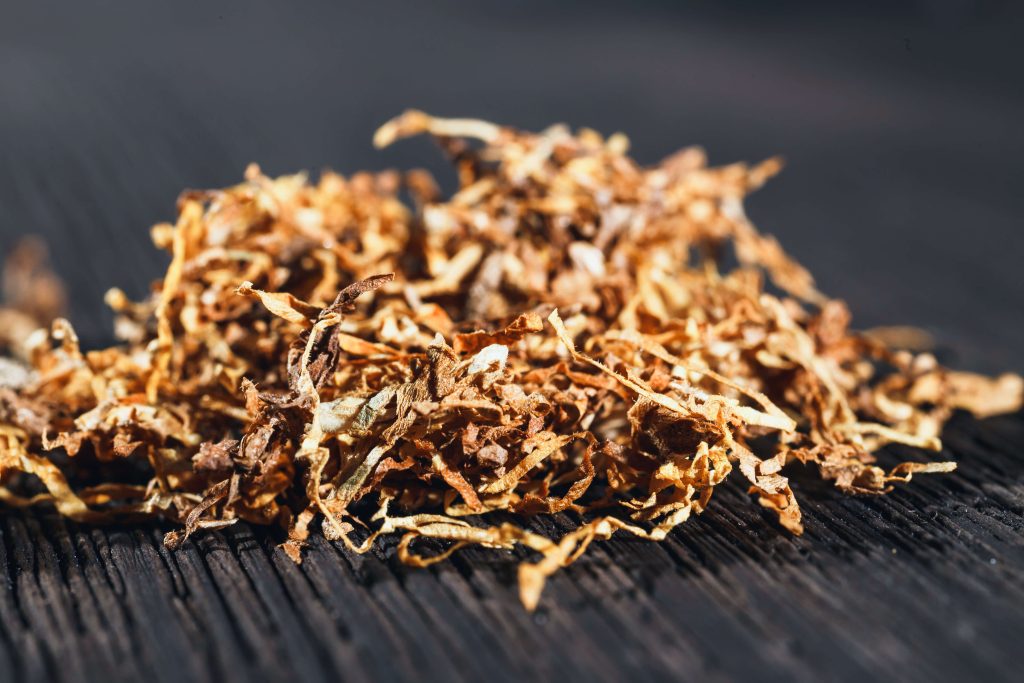
Thin ribbon cut tobacco is a variation of the standard ribbon cut, with the strands cut even thinner. This cut facilitates easy packing and lights up effortlessly, making it an excellent choice for beginners.
Latakia Tobacco: Weaving Magic in Thin Strands
Thin ribbon cut is often used with Latakia tobacco, which imparts a smoky and woody flavor to the blend. The thin strands ensure that Latakia’s unique characteristics are evenly distributed throughout the smoke. As you draw from your pipe, the enchanting Latakia whispers its smoky secrets with every puff.Cube Cut Tobacco
Cube-cut tobacco consists of small, square-shaped pieces of tobacco. This cut provides a different smoking experience, with a slower burn rate due to the compact shape of the cubes.
Exploring the Nuances of Oriental Leaf
Cube-cut tobaccos often feature Oriental leaf, renowned for its subtle and spicy flavor. The cube cut allows pipe smokers to savor the nuances of Oriental tobacco, which unfold gradually with each puff, revealing layers of complexity.
Common Styles of Tobacco
And now, something completely different! With our knowledge of the various tobacco cuts, we’ll look at some common styles of tobacco that use the methods described above.
Cavendish Tobacco
Cavendish is not a specific cut but a process in which tobacco is cured and flavored. It involves fermenting the tobacco under pressure and with minimal oxygen exposure, producing dark and sweet tobacco. Cavendish can be found in various cuts, including ribbon, flake, and plug.
Aromatic Blends: Cavendish’s Sweet Symphony
Cavendish is crucial in many aromatic blends, adding sweetness and depth to the overall flavor profile. As you indulge in an aromatic blend featuring Cavendish, you’ll be greeted by the delightful marriage of sweetness and fragrance, a testament to the transformative power of this unique curing process.
Fire-Cured and Dark-Fired Kentucky
Fire curing is a method of curing tobacco leaves over open fires, imparting a smoky flavor. Dark-fired Kentucky tobacco, in particular, is known for its robust, smoky taste and is a staple in many pipe tobacco blends.
Ready Rubbed Tobacco: Taming the Smoke
Fire-cured and dark-fired Kentucky tobaccos are often used in ready-rubbed tobacco blends, where the tobacco is pre-rubbed for easy packing and lighting. The smoky allure of these tobaccos is carefully balanced, allowing for a controlled and enjoyable smoking experience.
Orientals and Virginia Tobaccos: A Fragrant Union
Oriental tobacco is known for its unique and spicy flavor, while Virginia tobacco offers a natural sweetness. Blending these two types of smoking is common among pipe tobacco blenders, creating a balanced and flavorful smoke. As you ignite your pipe filled with this exquisite blend, you’ll embark on a journey through fragrant gardens and sweet orchards guided by the expert craftsmanship of the blender.
The Curing Process: Shaping Flavor
The curing process is critical in developing the flavor of pipe tobacco. There are various methods of curing, including air curing and sun curing. Each process imparts distinct characteristics to the tobacco leaves.
The two main curing methods are:
- Air-Cured Tobacco: This method involves drying the tobacco in open-air barns, resulting in a milder flavor and aroma—the tobacco leaf gradually processes, allowing its inherent qualities to shine through.
- Sun-Cured Tobacco: Sun-curing exposes tobacco leaves to sunlight, intensifying their flavors and aromas. This process occurs under the gentle kiss of the sun, infusing the leaves with nature’s warmth and richness.
Cut Tobacco: The Essence of Pipe Smoking
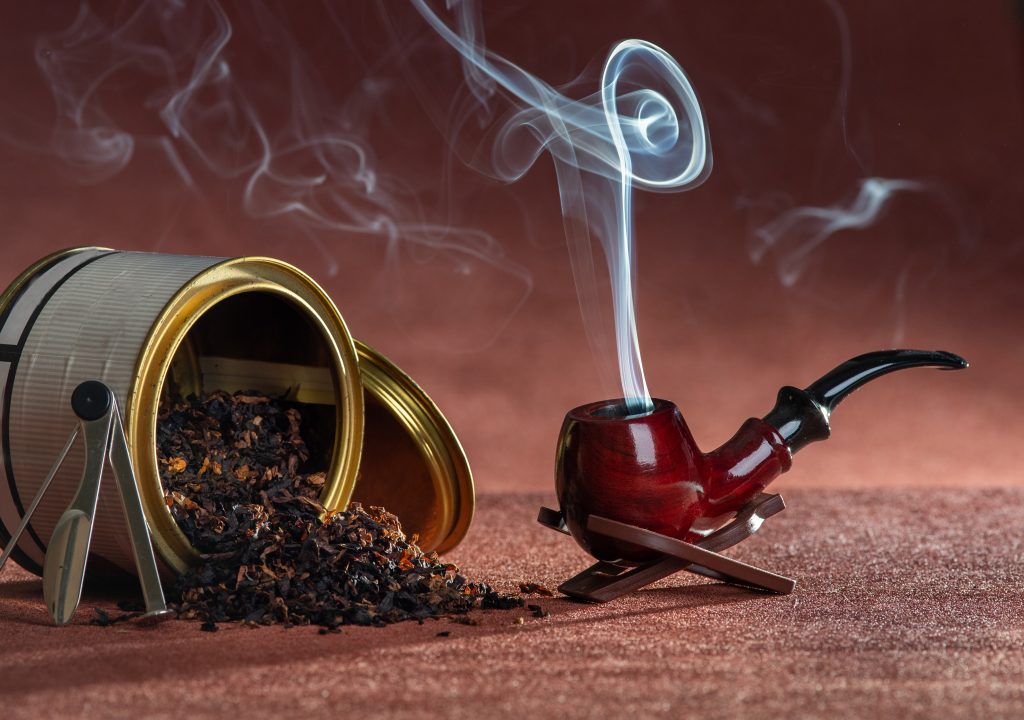
The term “cut tobacco” refers to tobacco that has been sliced or shredded into different shapes and sizes. The cut dramatically influences how the tobacco burns and the overall smoking experience. Typical cuts include ribbon, flake, cake, rope, etc. Each cut carries its unique personality, waiting to be explored by discerning pipe smokers.
Factors that Affect Tobacco Cut Type
Several factors can affect the cut of pipe tobacco, including the type of tobacco leaf used, the curing process, and the blending process.
- Type of tobacco leaf: The tobacco leaf used will affect the tobacco cut. For example, Virginia tobacco leaves are typically air-cured and cut into a ribbon cut. Burley tobacco leaves are usually fire-cured into a plug or rope cut.
- Curing process: The curing process will also affect the tobacco cut. Air-cured tobacco leaves are typically cut into a ribbon cut. In contrast, fire-cured tobacco leaves are generally cut into a plug or rope cut.
- Blending process: The blending process can also affect the tobacco cut. For example, a blend that contains a lot of Virginia tobacco may be cut into a ribbon cut. In contrast, a mixture that includes a lot of Burley tobacco may be cut into a plug or rope cut.
The Effect of Tobacco Cut Type
The tobacco cut will affect the smoking experience in several ways, including the burn rate, flavor, and aroma.
- Burn rate: Ribbon cut tobacco burns more evenly than other tobacco cuts. This is because the thin tobacco strips allow more oxygen to circulate.
- Flavor: The tobacco flavor will also be affected by the cut. Ribbon-cut tobacco typically produces a smoother smoke with less flavor than other tobacco cuts. Flake-cut tobacco typically has a richer, more flavorful smoke. Plug and rope-cut tobacco usually make an intense, full-bodied smoke with a lot of flavor.
- Aroma: The aroma of the tobacco will also be affected by the cut. Ribbon-cut tobacco typically produces a lighter scent than other types of tobacco cuts. Flake-cut tobacco typically has a more decadent aroma. Plug and rope-cut tobacco usually produce a more potent, intense aroma.
Choosing the Right Tobacco Cut
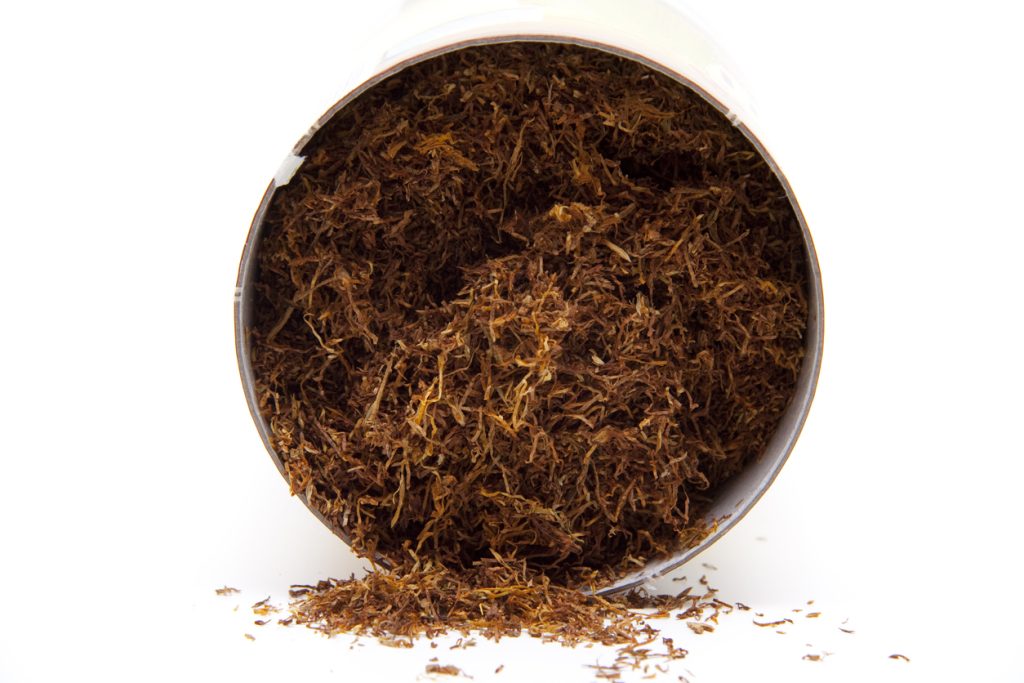
The best way to choose the right tobacco cut is to experiment with different cuts and blends. You may prefer a particular type of cut for specific occasions. For example, you may choose a ribbon-cut tobacco for a quick smoke on the go, while you may prefer a flake-cut tobacco for a leisurely smoke at home.
Here are some general guidelines for choosing the right tobacco cut:
- If you are new to pipe smoking, start with a ribbon-cut tobacco. Ribbon-cut tobacco is easy to pack and light, producing smooth smoke.
- If you want a richer, more flavorful smoke, try flake-cut tobacco. You can smoke flake-cut whole or rub it out into a ribbon cut.
- Try plug-cut or rope-cut tobacco for robust and full-bodied smoke. Plug-cut tobacco and rope-cut tobacco are typically rubbed out before smoking.
Conclusion
In the world of pipe smoking, the variety of tobacco cuts and blends is nearly as vast as the imaginations of the tobacco blenders. Each cut offers a unique smoking experience, from the quick-burning shag to the contemplative enjoyment of cake or rope tobacco. Choosing the right cut and blend comes down to personal preference. Don’t hesitate to explore and discover the tobacco cuts that suit your smoking style and taste.
Remember that the journey of a pipe smoker is not just about the destination but the flavors, aromas, and experiences encountered along the way. So, grab your favorite pipe, select your preferred tobacco cut, and embark on a delightful pipe-smoking journey where every puff brings you closer to understanding the intricate world of tobacco cuts and flavors. With each draw, you’ll explore the rich tobacco and centuries of craftsmanship and tradition shaping this time-honored pastime. Happy smoking!

